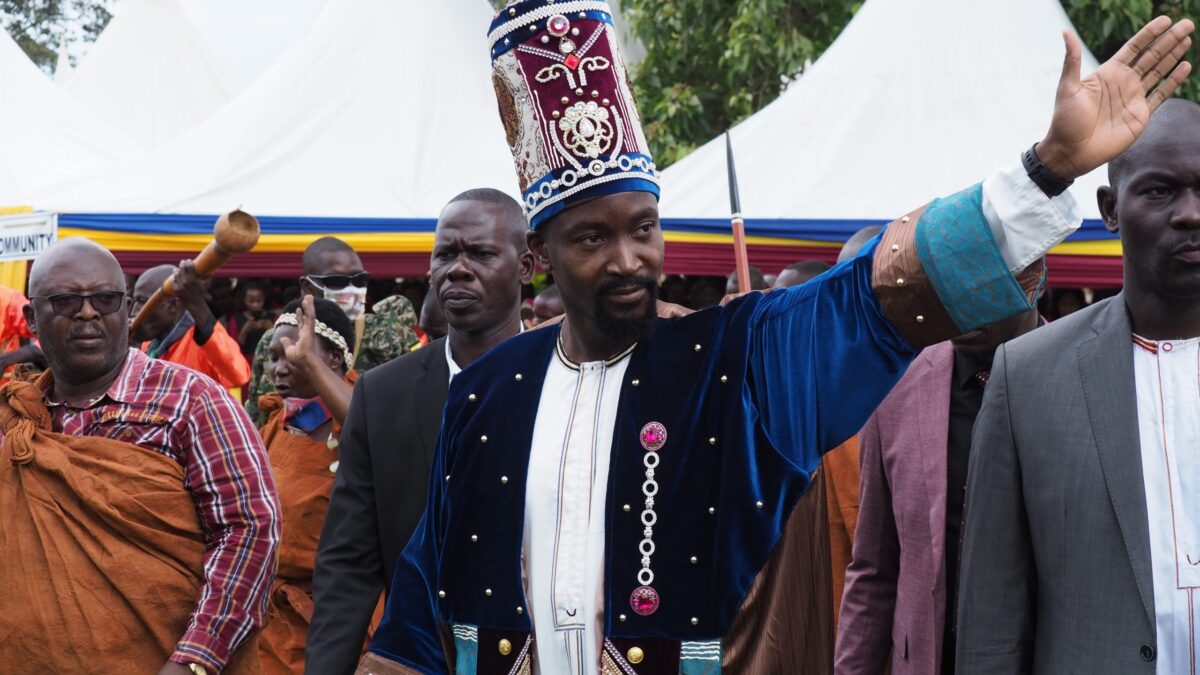Visit Busoga Kingdom

African Safari Travel Insurance
September 29, 2023
Visit and Hike Mount Moroto
September 29, 2023Exploring Busoga Kingdom: Unveiling the Culture, People, and Attractions
Visiting Busoga Kingdom:
Nestled in the heart of Uganda, Busoga Kingdom stands as a symbol of rich cultural heritage and tradition. It is one of the five constitutional monarchies in Uganda, known for its pivotal role in promoting unity, moral values, and active participation in developmental programs. The kingdom plays a crucial part in enhancing the overall standard of living within the Busoga region.
A Cultural Powerhouse:
Busoga Kingdom is unwavering in its pursuit of social, cultural, and economic prosperity. At its helm stands the revered “Kyabazinga,” the local title for the King of Busoga. The name “Busoga” itself signifies the “Land of the People (Soga).” Comprising 11 principalities, each individual belonging to these principalities is known as a “Musoga.”
Geographic Essence:
Bugembe town, adjacent to Jinja, the “Adventure Capital of East Africa,” serves as the capital of Busoga Kingdom. This culturally rich domain encompasses eight districts, including Luuka, Busiki, Kamuli, Mayuge, Kaliro, and Bugiri. Each district is led by a chairperson or local Council Five, elected by the people, while the Municipalities have their mayors.
Borders and Neighbors:
Busoga Kingdom is strategically positioned amidst natural wonders. It is encircled by Lake Kyoga in the north, Lango area to the north, Lake Victoria to the west (separating it from the Buganda Kingdom), and borders Tanzania and Kenya to the south. River Mpologoma further delineates its boundaries from the small groups of Bagishu and Bugwere.
The Kyabazinga: A Symbol of Unity:
The head of Busoga Kingdom, the Isebantu Kyabazinga, presently known as William Kadhumbula Gabula Nadiope IV, embodies the spirit of unity. “Isebantu” translates to “father of all people,” representing the essence of bringing people together in love and harmony. Traditionally, the Kyabazinga was elected from among the five hereditary chiefs, believed to trace their lineage to the Bunyoro Kitara Kingdom. However, constitutional modifications have allowed all 11 hereditary chiefs to stand in the Kyabazinga Kingship elections, with term limits replacing the previous lifetime appointments.
Historical Footprints and Economic Growth:
Over the years, Busoga Kingdom has thrived through agriculture. Cash crops like cotton, cultivated between 1920 and 1970, played a pivotal role in establishing Busoga’s prominence as an Agri-industrial Center. The introduction of the railway line bolstered economic growth, paving the way for infrastructure development, including electricity, piped water, hospitals, roads, and schools. This progress not only improved living standards but also generated employment opportunities, attracting people from various regions to work in factories and domestic roles.
Crop Diversity:
The region’s farmers cultivated a diverse range of crops, including coffee, cotton, potatoes, cassava, bananas, vegetables, and fruits. This agricultural diversity ensured a stable market for produce and sustained both economic production and subsistence farming.
Jinja: The Economic Epicenter:
Jinja city, the economic and industrial hub of Busoga, boasts a rich history. It was home to about 70% of Uganda’s industries by the time of the country’s independence in 1962. The city housed Nalubale Power Station, a key supplier of electricity to both Uganda and Kenya, and a significant Asian population that contributed to establishing one of East Africa’s largest commercial centers.
Tourist Attractions and Historical Sites in Busoga Kingdom
Kagulu Rock:
Kagulu Rock, a historical landmark, is the site of the first settlement for the Banyoro-Basoga, led by the Omukama. Offering breathtaking panoramic views of the Busoga region, this rock has become a prominent tourist attraction with accessible steps leading to its summit.
Source of the Nile River:
The source of the Nile River, where the mighty river originates from Lake Victoria in Jinja, holds great historical significance. It was first discovered by John Speke, one of Uganda’s early European explorers. Today, it continues to draw visitors from all over the world.
Budhumbula Palace Shrine:
Located just 2 kilometers from the Kamuli-Jinja Highway, this site houses various shrines and serves as the final resting place for the Late Kyabazinga William Wilberforce Kadhumbula Nadiope. The marble-covered shrines also pay tribute to other members of the Royal Family and a former government minister, Yuliya Babirye Nadiope.
Lake Victoria:
Bordering the southern edge of Busoga Kingdom, Lake Victoria, one of Africa’s great freshwater lakes, offers scenic beauty and economic significance.
Bujjagali Falls:
Though submerged by the Bujjagali Dam in 2011, Bujagali Falls was once a renowned waterfall and hydropower station along the Victoria Nile. It remains a captivating part of Busoga’s history.
For a deeper exploration of Busoga Kingdom’s culture, history, and attractions, consider embarking on a journey to this culturally vibrant and historically rich region. Busoga Kingdom beckons with its unique blend of tradition and natural wonders, inviting travelers to uncover its hidden treasures.

